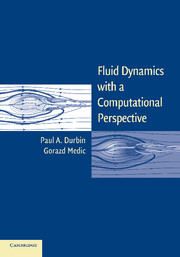1 - Introduction to Viscous Flow
Published online by Cambridge University Press: 28 January 2010
Summary
Why Study Fluid Dynamics?
Fluid dynamics is a branch of classical physics. It is an instance of continuum mechanics. A fluid is a continuous, deformable material. It is a material that flows in response to imposed forces. This is embodied in the everyday experience of draining water from a sink. The water flows under the action of gravity. It does not have a fixed shape; it fills the sink, conforming to its shape. The water flows with variable velocity, depending on its distance from the drain. All these distinguish fluid motion from solid dynamics. As another example, a pump propels water through a pipe or through the cooling system of a car. How does the reciprocating movement of the pump produce directed flow, extending to distant parts of the cooling circuit? One way or the other, the pump must be exerting forces on the fluid; one way or the other, these forces are communicated to distant portions of the fluid and sets them in motion. It is far from obvious what the nature of that flow will be, especially in a complex geometry. It may be laminar, it may be turbulent; it may be unidirectional, it may be recirculating.
Recirculation is the occurrence of backflow, opposite to the direction of the primary stream. This can be seen behind the pedestals supporting a bridge in a swift river. Despite the strong current, the flow direction reverses, and a circulating eddy forms in a region behind the pedestal. How is such behavior understood and predicted? An understanding requires knowledge of viscous action, of vorticity, of turbulence, and of the governing equations.
- Type
- Chapter
- Information
- Fluid Dynamics with a Computational Perspective , pp. 1 - 60Publisher: Cambridge University PressPrint publication year: 2007
- 2
- Cited by

